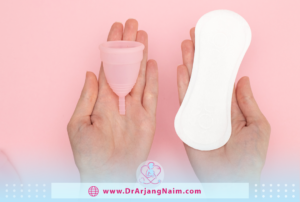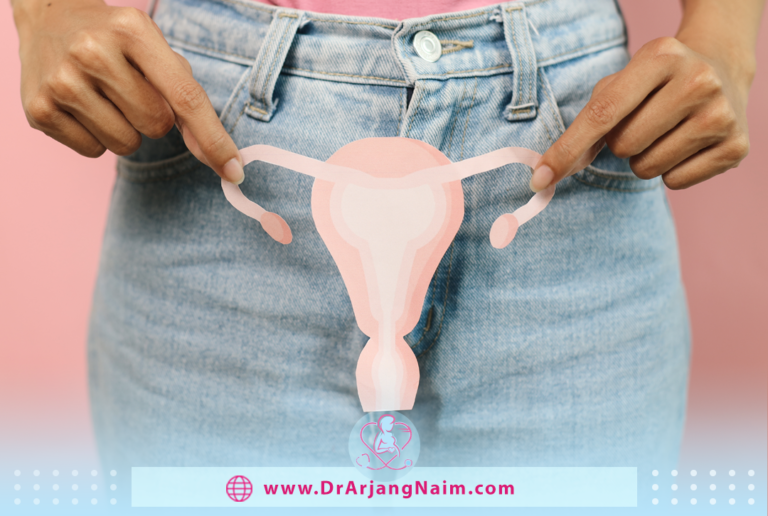Cervical ectropion is a cervical abnormality that occurs when the surface cells of the cervical canal turn outward and migrate to cover part or all of the external surface. Treatment is usually only necessary if the cervix is irritated or infected.
What is cervical ectropion?
It is a common condition where cells from inside the cervix spread to the outside, causing a red appearance. Often harmless and without symptoms, it’s linked to hormonal changes and is common in young women, pregnant women, and those on hormonal birth control. While it can cause abnormal bleeding or increased discharge, it’s usually diagnosed during a routine pelvic exam and often requires no treatment. If symptoms are bothersome, options include observation, cauterization, or medication.

What are the symptoms?
Most people with cervical ectropion have no symptoms at all. Until they go to their gynecologist, they are not aware of it.
If you have symptoms, they likely include:
- Light mucous secretions
- Spotting between periods
- Pain and bleeding during or after intercourse
- Pain and bleeding can also occur during or after a pelvic exam.
Cervical changes are one of the common causes of bleeding in the last months of pregnancy. The reason for these symptoms is that glandular cells are more delicate than epithelial cells. They produce more mucus and bleed easily.
Cervical ectropion is not severe. However, these signs and symptoms can result from other conditions that need to be ruled out or treated. Some of these are:
- Infection
- Fibroids or polyps
- Endometriosis
- Intrauterine device (IUD) problems
- Pregnancy problems
- Cancer of the cervix, uterus, or other types

Causes
Some people are born with cervical ectropion. The following factors may also play a role:
- Hormonal changes: Cervical ectropion may occur due to fluctuations in hormone levels. It is mostly seen in people of reproductive age. People who have already gone through menopause rarely develop cervical ectropion.
- Taking birth control pills: Taking birth control pills affects hormone levels and may cause cervical ectropion.
- Pregnancy: Being pregnant may cause cervical ectropion due to changes in hormone levels.
- Age: Younger people going through puberty are more at risk of cervical ectropion.
What’s the difference between cervical erosion and cervical ectropion?
Cervical ectropion and cervical erosion are often used interchangeably, but they differ. While cervical erosion implies that the cervix is physically damaged, this isn’t accurate. Cervical ectropion is the correct term. It describes a condition where cells inside the cervix spread to the outside, creating a red appearance. It’s important to understand that cervical ectropion is a harmless condition unrelated to cervical cancer.

Diagnosis
Cervical ectropion is likely to be discovered during a routine pelvic exam and Pap test. This condition is visible during a pelvic exam because the cervix looks bright red and rougher than usual. There may be some bleeding during the examination.
The most common diagnostic tests are:
- Pelvic exam: During a pelvic exam, the doctor examines the cervix to see if it is red or contains extra cells.
- Pap smear test: During this test, the doctor takes a sample of cells from the cervix and checks them for abnormalities.
- Colposcopy: During a colposcopy, the doctor uses a colposcope to examine the surface of the cervix and check for any signs of cervical ectropion or other abnormalities.
- Biopsy: A biopsy is a procedure that involves taking a sample of tissue from the cervix to check for signs of abnormal cells or disease. A biopsy can be performed at the same time as a colposcopy.
Although there is no connection between them, primary cervical cancer is very similar to cervical ectropion. Pap tests can help rule out cervical cancer. You probably don’t need further testing if you have no symptoms and your Pap test results are expected. If you have difficult symptoms, such as pain during sex or heavy discharge, your doctor may want to test for an underlying condition.
Treatment
Most women don’t require treatment for cervical ectropion as it’s often harmless. However, if symptoms like excessive discharge or bleeding are bothersome, treatment options include:
- Observation: In some cases, the condition may resolve on its own.
- Cauterization involves using heat (diathermy) or cold (cryotherapy) to remove the affected tissue.
- Silver nitrate: A chemical solution applied to the cervix to remove excess tissue.
It’s essential to consult with your healthcare provider to determine the best treatment option based on your specific symptoms and overall health. Dr. Arjang Naim is the ideal OB-GYN to guide you in this field.
Side effects of cervical ectropion treatment
While treatment for ectropion is often successful, it can cause some temporary side effects. These typically include:
- Pain or cramping can last a few days, like menstrual cramps.
- Bleeding: Light bleeding is common and lasts up to two weeks.
- Discharge: You might experience a watery or slightly bloody discharge.
- Infection: In rare cases, an infection can occur.
Living with cervical ectropion
If you have been diagnosed with cervical ectropion, you must have regular checkups. This includes the Pap smear test to screen for cervical cancer.
While the disease is harmless, addressing symptoms affecting quality of life is important. Communication with your healthcare provider is key to effective management of cervical ectropion. Remember, cervical ectropion is a common condition that does not pose a significant health risk. Many women live with it without experiencing any problems.

Cervical ectropion and pregnancy
Cervical ectropion is especially common during pregnancy due to the significant hormonal changes that occur. Increased estrogen levels can contribute to the reddening and enlargement of the cervical tissue. While this often does not cause problems, monitoring for unusual symptoms is necessary.
If you’ve been diagnosed with cervical ectropion, it’s essential to maintain regular checkups with your healthcare provider. This includes routine Pap smears to screen for cervical cancer.
While the condition is harmless, addressing symptoms affecting your quality of life is crucial. Open communication with your healthcare provider is key to managing cervical ectropion effectively. Remember, cervical ectropion is a common condition that doesn’t pose a significant health risk. Many women live with it without experiencing any issues.
Cervical ectropion and pregnancy risks
While cervical ectropion itself doesn’t directly increase pregnancy risks, it’s important to be aware of potential complications:
- Increased discharge: The hormonal changes can lead to a thicker, more mucus-like discharge. While generally harmless, it’s essential to differentiate it from other potential infections.
- Bleeding: Some women may experience spotting or light bleeding, especially after sexual intercourse. While often routine, informing your healthcare provider about unusual bleeding is crucial.
- Infection: In rare cases, cervical ectropion can be associated with an increased risk of infection. This is why regular prenatal checkups are essential.
Cervical ectropion and fertility
Contrary to popular belief, cervical ectropion does not usually affect fertility. However, it may create a less favorable environment in rare cases with severe inflammation or infection.
The bottom line
Cervical ectropion is a common and harmless condition that affects the cervix. It happens when the cells inside the cervix spread outward and appear red. Although it can sometimes cause symptoms such as abnormal bleeding or increased discharge, it does not increase the risk of cervical cancer.
Most women with cervical ectropion do not need treatment. However, if symptoms are bothersome, options include observation, burning, or the use of silver nitrate.
Cervical ectropion is especially common during pregnancy due to hormonal changes. While it does not usually affect Pregnancy or fertility, regular prenatal care is essential to monitor for any potential complications.
Consequently, cervical ectropion is a normal change in cervical tissue that usually does not require medical intervention. It’s important to have regular checkups with your healthcare provider to monitor for any symptoms or changes.
Additional questions
- Can cervical ectropion cause smelly discharge?
Cervical ectropion itself usually does not cause foul-smelling discharge. However, it can create a moist environment that increases the risk of infection. If you experience foul-smelling discharge, it’s important to consult a healthcare provider, as it could indicate an underlying infection such as bacterial vaginosis, trichomoniasis, or other sexually transmitted infections. Other factors, such as hormonal changes or pelvic inflammatory disease, can also contribute to abnormal discharge.
- Can an IUD cause cervical ectropion?
There is a possible association between cervical ectropion and IUD use. It has not been definitively proven that it causes the disease. Still, studies have shown that the prevalence of cervical ectropion is higher among women who use an IUD compared to women who do not have an IUD.
- What cases are cauterization used for?
Cautery is a medical technique performed by a doctor. This method uses electricity or chemicals to burn the tissue to close the wound. Wound cauterization is a routine procedure but not the first line of treatment.
- What are the different types of cervical abnormalities?
- Cervical Intraepithelial Neoplasia (CIN)
- Atypical Squamous Cells of Undetermined Significance (ASC-US)
- Low-Grade Squamous Intraepithelial Lesion (LSIL)
- High-Grade Squamous Intraepithelial Lesion (HSIL)
- Cervical Ectropion
- What are the five warning signs of cervical cancer?
- Vaginal bleeding after sex
- Vaginal bleeding after menopause
- Vaginal bleeding between periods
- Vaginal discharge that is watery and has a strong odor or contains blood
- Pelvic pain or pain during sex
References
https://my.clevelandclinic.org/health/diseases/23053-cervical-ectropion
https://www.healthline.com/health/womens-health/cervical-ectropion#other-conditions
https://www.medicalnewstoday.com/articles/320298




